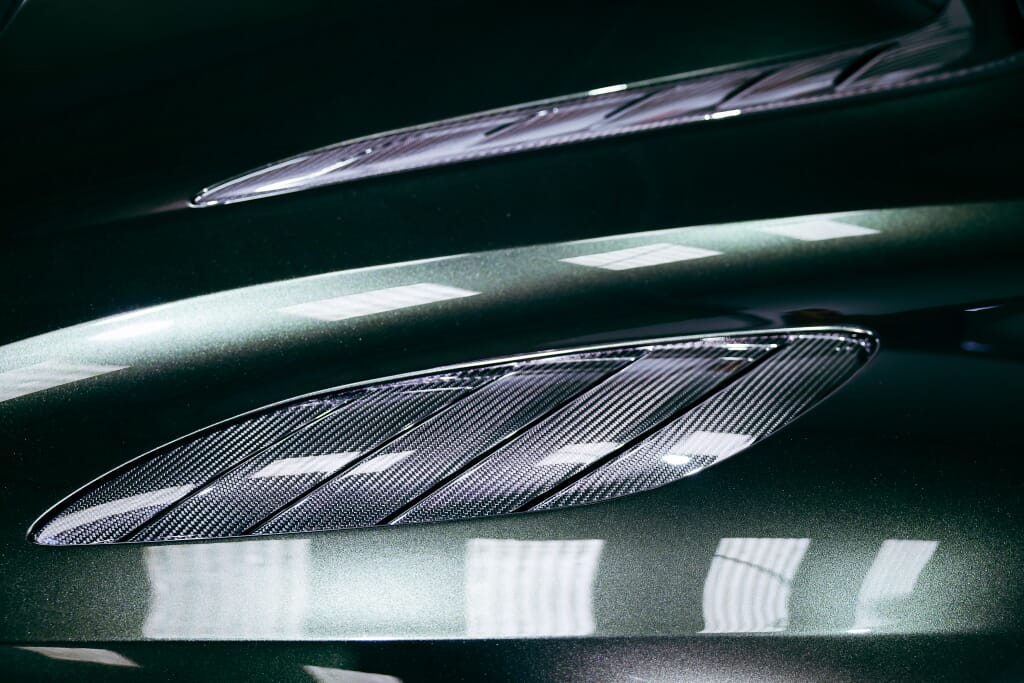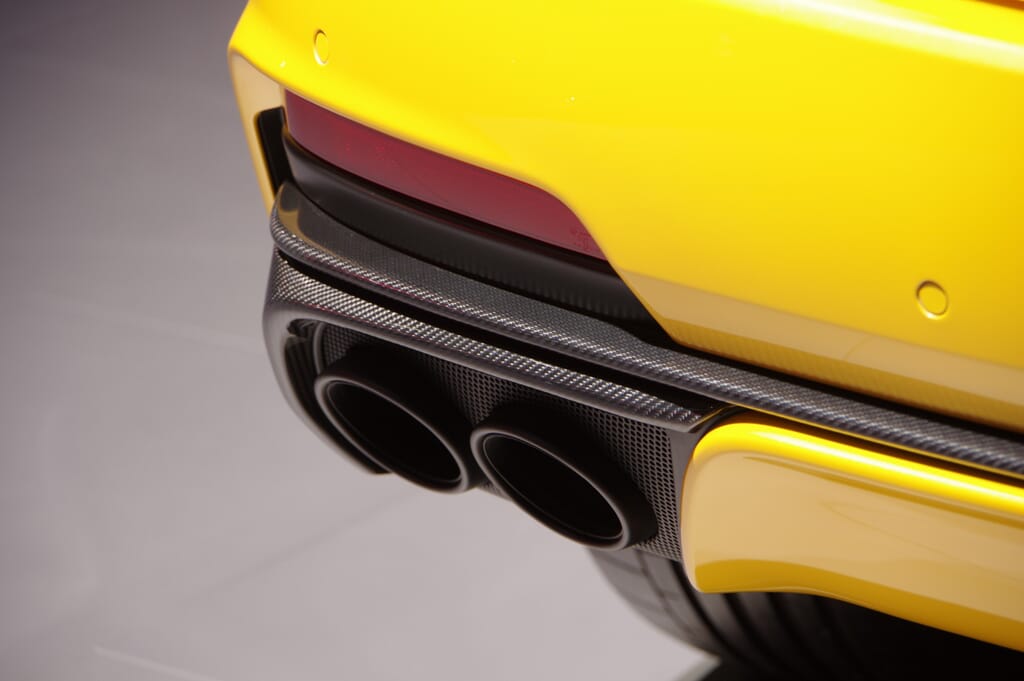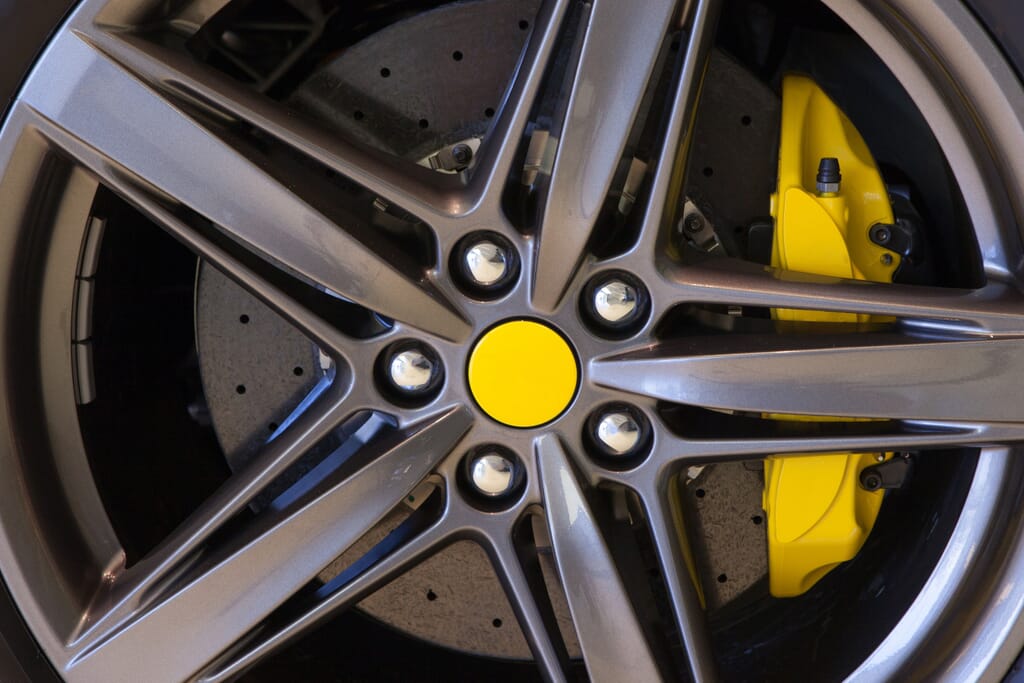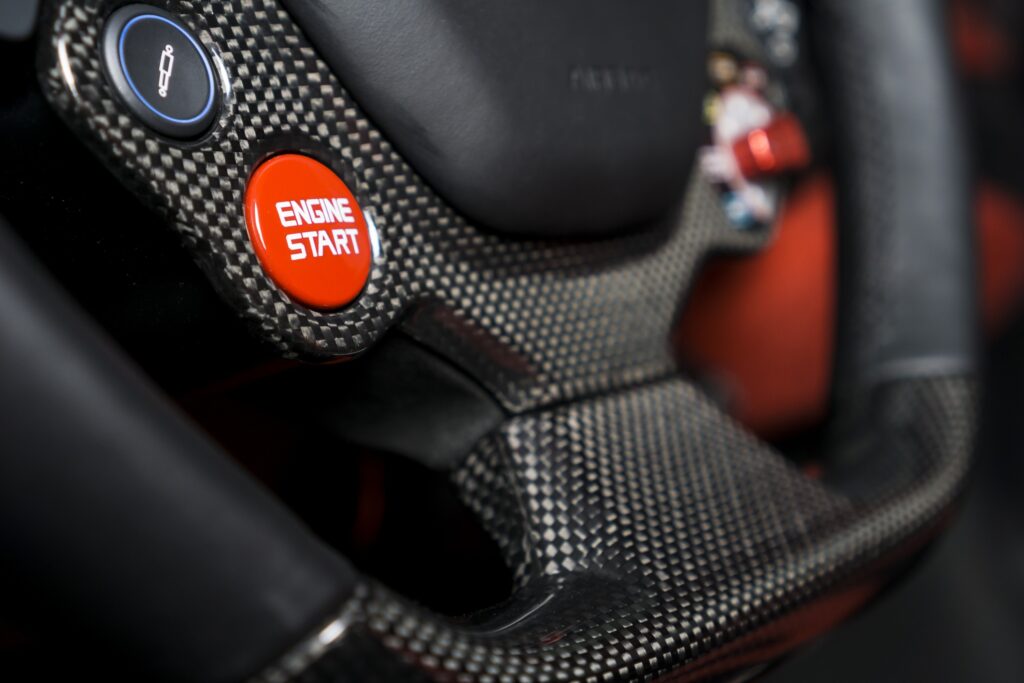
In under half a century carbon fibre has gone from being the cutting edge of Formula 1 technology, through a similar revolution in the structure of supercars in the 1990s, to being a substance so commonplace you won’t just find it at the heart of racing and high-performance vehicles but on bicycles, sports equipment, household items, and trinkets.
Its properties of strength and light weight still make it desirable in the automotive sector though, and it’s still used to form the core structure of several supercars, but is also commonly used for exterior panels, trim, interior parts, engine bay dressing, and even wheels.
Whether driving, cleaning, or storing your car however, what’s the best way to look after carbon fibre (and other carbon-related components) in all its forms? We spoke to master detailer Richard Tipper of Perfection Valet, who has amassed plenty of experience on carbon fibre care after more than 35 years of working on both road and racing cars.
One thing he’s quick to dispel is that it’s especially difficult looking after carbon fibre on your car. “People tend to be quite fearful because it’s expensive because it’s in high demand for optional parts – even though it’s no longer that expensive to produce. But it’s a relatively simple product to maintain and protect because you can treat it very much like paint.”
Carbon Fibre Cleaning Techniques

Cleaning should be the first step in carbon fibre care, and that’s where the similarity of glossy carbon to paint comes in. The thick clear coat or resin on glossier carbon fibre finishes can be cleaned, polished, and waxed in just the same way as you would a painted body panel, and will happily accept the same cleaning products.
Tipper gives the example of his work preparing the 24 Aston Martin Vulcan track cars. While Aston Martin was working out production tolerances for this limited-run vehicle, the doors were cutting quite deep gouges into the carbon sills – but Tipper found the resin was thick enough he could cut and polish the sills back as if the gouges were never there.
Matte carbon can still be cleaned in much the same way but clearly you’re not going to want to polish it as you would gloss, and you should also avoid polishing textured, coarse, or ‘naked effect’ carbon fibre finishes.
“It’ll get in the grain and dry” says Tipper, “so you shouldn’t polish it, in much the same way you wouldn’t polish vinyl or the textured unpainted plastic you used to get on car bumpers.” He does note that lubricant sprays like GT85 can give textured carbon a glossy finish, but beware of things like WD40, which have the same effect but also contain solvents that can affect the surface finish and make it deteriorate quicker.
If you dabble with interior cleaning, then much the same applies, though you naturally won’t be using quite as strong products as you would on the exterior anyway. Even carrying a microfibre cloth in the glovebox to occasionally buff away smudges and fingerprints should do the trick for decorative carbon fibre like steering wheel inserts and centre consoles.
- Top tip: You can use the same cleaning and polishing products on glossy carbon fibre as you would on paintwork with a clearcoat.
Engine Bay Carbon Fibre

Carbon fibre is resilient, and the material itself won’t wilt under the heat experienced when it’s used in engine bays – think cars like the Ferrari F430 Scuderia, or the airbox on a BMW M3 CSL. But the heat can chemically affect the resin and cause a yellowing effect “a little like when you paint your house radiators white, and after five or ten years they’ve started to turn yellow” says Tipper. If you’re familiar with BMW’s 320si homologation special from the 2000s, you’ll know its carbon fibre cam cover looks distinctly yellowed in most models on the market.
This too can be fixed, but Tipper says it’s around “80 per cent retrievable”. In other words, you can clean and polish engine bay carbon fibre much as you would carbon elsewhere on or in the car, but it’ll always be slightly yellowed “with a critical eye”. If this is the case with your car, simply call it patina… or start hunting for replacement carbon components.
Age can affect the finish anywhere on the car too, if not visually, then in how resilient the material is to certain cleaning products after years exposed to sunlight, weather, and other cleaning products. “If it’s not protected regularly, then some of the multi-purpose cleaners, which are caustic based, can discolour the carbon” says Tipper. Discolouration can be polished out, but as with polishing anything, remember that you only get so many opportunities to do so before the clearcoat is too thin.
- Top tip: Yellowing of carbon fibre is normal in high-temperature areas, but it can be mostly brought back with polishing.
Protecting High-Impact Carbon Fibre Components

The most important areas of carbon fibre to protect are what Tipper calls the “forward-facing” elements, most exposed to weathering and stone chips, as while carbon fibre is robust, the resin isn’t quite as resistant to chipping damage as the clearcoat on paintwork can be.
“It would be wise to get things like front splitters and door mirrors covered in PPF [paint protection film] or some of the other products on the market” he says. You might wish to apply the same thinking to other high-wear areas, such as the high cockpit sills on cars like McLarens, which might get clipped by shoes or scratched by clothing and bags as people get in and out.
Otherwise, protection is much like paint: ceramic coating is eminently possible, and you can use the same waxes and polishes to keep it looking healthy – again with the caveat that more exposed, textured or aged carbon won’t take to polishing or waxing in the same way.
Then there are carbon wheels. Finish-wise, there’s not much to mention here. But as wheels get put under a lot of punishment, and can be very expensive, protection is more about avoiding causing them damage to start with than bracing yourself for stone chips or dirt.
- Top tip: Apply PPF to protect vulnerable areas like mirrors and splitters.
Long-Term Storage Considerations
One benefit of carbon fibre is its resilience during storage. Unlike some materials, properly finished carbon fibre requires no special treatment when storing your vehicle for extended periods to keep it looking in good condition, ready for when you drive the car again.
Special Considerations for Carbon-Adjacent Materials

Carbon-Kevlar Maintenance
Tipper mentions a couple of other carbon-adjacent materials that may come up depending on the car. The first is carbon-kevlar, which you’ll find on the likes of the Ferrari F40, as well as occasionally making an appearance as the structure of bucket seats, and big slabs of it have often been used in racing and rally cars for everything from door cards to dash panels housing switches and gauges.
The F40 illustrated one of the material’s limitations, in that it can be slightly porous, so paint would actually begin to sink into it over time. If it’s painted, you can still clean it as you would any other painted surface, but if it’s unfinished, “just leave it alone” says Tipper.
“There’s not a great deal you can do with it. Lift the front clamshell on an F40 and you’ll see the finish is quite rough and fibrous – you couldn’t even wipe it with a microfibre cloth as it’d just tear the fibres off the cloth.”
It’s also very vulnerable to cleaning products, especially those with caustic ingredients, so it’s better simply not to touch it – and of course, leave it to the professional detailers to handle.
- Top tip: Keeping carbon kevlar in top condition is best left to the professionals.

Carbon-Ceramic Brake Care
While not structurally similar to carbon fibre panels, Not strictly the same as other elements on this list, but Tipper mentions a few care tips for cleaning the wheels of any car with carbon-based brake discs.
“Be careful with the stronger wheel cleaners” is the first tidbit of advice. “Carbon-ceramic brakes are quite porous to chemicals, and especially the fallout/iron-removal style cleaners can have a detrimental effect on the construction of the disc.”
The benefit, he says, is that these discs don’t cause as much fallout to begin with, so you probably won’t need to use especially strong products on the wheels as a result. “So if you clean your wheels regularly, just use soapy water rather than any chemical-based product.”
- Top tip: As carbon-ceramic brakes don’t generate much dust, you can use regular soapy water to clean the wheels.
Quick Tips for Carbon Fibre Care
- Glossy carbon: Clean and protect like painted surfaces
- Matte carbon: Avoid polishes and waxes that can damage the finish
- High-impact areas: Consider paint protection film for splitters and mirrors
- Textured carbon: Avoid polishes that can become trapped in the grain
- Engine bay components: Expect some yellowing over time from heat exposure
- Carbon-ceramic brakes: Use gentle cleaners to preserve porosity
Conclusion

With proper care and maintenance, the carbon fibre components on your vehicle can remain in pristine condition for years to come. The key takeaway? Most carbon fibre can be treated much like your car’s paint, but always consider the specific finish (gloss, matte, or textured) before applying any products.
Frequently Asked Questions
Q: Can I fix yellowed carbon fibre in the engine bay? A: Yes, but only partially. Tipper notes it’s about “80 percent retrievable” through polishing, but critical eyes will still notice some yellowing.
Q: How often should I protect carbon fibre components? A: Treat them like painted surfaces – apply protection every 3-6 months depending on use and exposure.
Q: What’s the biggest mistake people make with carbon fibre? A: Using inappropriate cleaning products, especially on textured or aged carbon surfaces.
Q: Is ceramic coating worth it for carbon fibre? A: Yes – carbon fibre accepts ceramic coatings well and benefits from the same long-term protection as paint.


